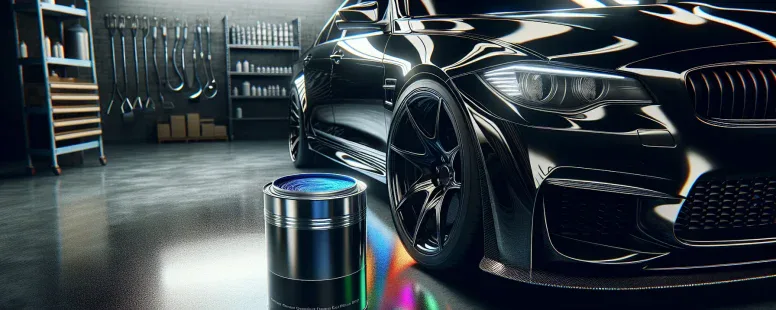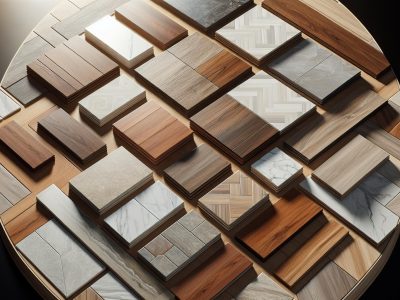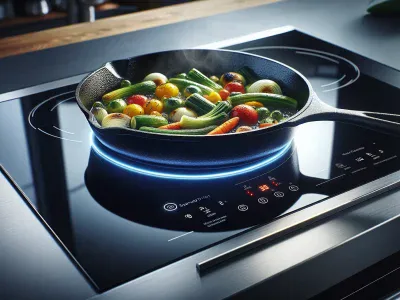Key Differences Between PPF and Ceramic Coating: Which is Right for Your Car?
Your car’s finish is more than just a layer of paint—it’s a statement, an investment, and often the first thing people notice. Protecting it from scratches, chips, and environmental damage can feel like navigating a maze of options. Two popular choices—paint protection film (PPF) and ceramic coating—often leave you wondering which one truly suits your needs.
Picture rain beading off your car like liquid pearls or road debris bouncing harmlessly away without leaving a mark. Both PPF and ceramic coating promise to shield your vehicle, but they do so in entirely different ways. Whether you’re after invisible armor or a mirror-like shine, understanding their differences could save you time, money, and frustration.
What Is PPF?
Paint Protection Film (PPF) is a clear, durable layer applied to your car’s exterior. Designed primarily from polyurethane or similar polymers, it defends against scratches, rock chips, and other physical abrasions.
Features Of PPF
- Material Composition: PPF uses thermoplastic polyurethane (TPU), which offers elasticity and impact resistance.
- Self-Healing Properties: Minor scratches disappear when heat activates the film’s surface.
- Thickness Range: Typically measures 6 to 10 mils thick, ensuring robust protection without altering your car’s appearance.
- Clarity Options: Includes gloss or matte finishes for aesthetic flexibility.
Benefits Of PPF
- Impact Resistance: Protects high-impact areas like bumpers and hoods from road debris.
- UV Shielding: Blocks harmful UV rays, preventing color fading over time.
- Customizability: Can be tailored for specific panels or entire vehicles.
- Longevity: Lasts up to 5–10 years with proper maintenance.
Limitations Of PPF
- Cost Factor: High-quality installation can cost $500–$7,000 depending on coverage area.
- Installation Complexity: Requires professional application for optimal performance.
- Maintenance Needs: Needs regular cleaning to prevent edge lifting or staining if exposed to contaminants like bird droppings.
What Is Ceramic Coating?
Ceramic coating is a liquid polymer applied to a vehicle’s exterior surfaces, forming a chemical bond with the factory paint. This protective layer enhances shine and provides resistance against minor scratches, UV rays, and contaminants.
Features Of Ceramic Coating
- Durable Bond: The coating creates a semi-permanent or permanent bond with the car’s paint, making it resistant to wear over time. It doesn’t wash off or break down easily like wax does.
- Hydrophobic Properties: Water beads up and rolls off the surface due to its hydrophobic nature, carrying dirt away for easier cleaning.
- High Gloss Finish: This treatment enhances the vehicle’s appearance by providing a deep, mirror-like gloss.
- Chemical Resistance: Protects against acidic contaminants such as bird droppings and tree sap that may damage your car’s clear coat.
Benefits Of Ceramic Coating
- Ease of Maintenance: Cleaning becomes simpler since dirt and grime don’t stick easily to treated surfaces. For example, rinsing off mud after driving through rough terrain requires less effort.
- UV Protection: Prevents oxidation caused by prolonged exposure to sunlight in regions with intense heat.
- Enhanced Visual Appeal: Offers an improved aesthetic appeal through increased depth and clarity of your vehicle’s color.
- Longevity: While professional-grade coatings can last 2–5 years with proper care, some high-end options extend beyond this range.
Limitations Of Ceramic Coating
- No Impact Resistance: Unlike PPF, ceramic coating doesn’t protect against rock chips or physical abrasions from road debris.
- Professional Application Recommended: Achieving optimal results typically demands expertise; improper application might lead to uneven coverage or streaks.
- Cost Variability: Professional installation ranges from $500–$2,000 depending on product quality and service provider reputation.
Key Differences Between PPF And Ceramic Coating
Understanding the differences between Paint Protection Film (PPF) and ceramic coating ensures you select the option that best fits your vehicle’s needs. Each offers distinct advantages and limitations, which become clearer when comparing their features.
Durability Comparison
PPF provides superior durability due to its thick thermoplastic polyurethane layer. It’s designed to withstand physical impacts, such as rock chips or scratches, without compromising the car’s finish. Self-healing properties further increase longevity by allowing minor surface damage to disappear under heat.
Ceramic coating forms a hard but thin protective layer over the paint. While it resists minor abrasions and environmental factors like UV rays or bird droppings, it doesn’t offer impact resistance like PPF does. Professional-grade ceramics typically last 2–5 years or longer with care, compared to PPF’s lifespan of up to 10 years.
Protection Capabilities
PPF excels at physical protection by absorbing impacts from road debris or accidental scratches. Its UV-resistant material also prevents paint fading over time. For example, if you’re driving on gravel roads frequently, PPF acts as a shield against flying stones.
Ceramic coating focuses more on chemical resistance and hydrophobic performance than physical safeguarding. It repels water effectively, making cleaning easier while reducing risks of water spots or contamination buildup. But, it won’t protect against deep scratches caused by sharp objects.
Cost Differences
PPF installation costs range from $1,000–$7,000 depending on coverage area and brand quality. Full-body applications are significantly pricier but provide comprehensive protection for high-value vehicles.
Ceramic coatings are less expensive upfront but vary widely in price based on product type and professional application fees—typically ranging between $500–$2,000 for premium services. DIY options exist at lower costs but may lack durability compared to professionally applied coatings.
| Feature | PPF | Ceramic Coating |
|---|---|---|
| Durability | Up to 10 years | 2–5+ years |
| Cost Range | $1k–$7k | $500–$2k |
| Focus | Impact resistance | Chemical/hydrophobic |
Maintenance Requirements
Maintaining PPF involves occasional inspections for edge lifting or discoloration due to contaminants like tar or tree sap; professional touch-ups might be needed if issues arise over time.
Choosing The Right Option For Your Vehicle
Selecting between paint protection film (PPF) and ceramic coating depends on your vehicle’s specific needs, usage, and personal priorities. Each option offers unique advantages tailored to different scenarios.
When To Choose PPF
Opt for PPF if protecting against physical damage is your top priority. This thermoplastic polyurethane layer absorbs impacts from road debris, preventing chips and scratches. It’s ideal for daily drivers exposed to harsh conditions or vehicles frequently traveling on gravel roads.
Consider PPF when owning a luxury car where resale value matters. Its self-healing properties maintain the pristine look of high-end finishes, which appeals to potential buyers. Use it on vulnerable areas like bumpers, hoods, or side mirrors for targeted protection without covering the entire car.
If you’re looking for long-term durability with minimal compromise in appearance, PPF provides up to 10 years of service when maintained properly. But, its upfront cost can reach $7,000 for full coverage—an investment justified by its extensive benefits.
When To Choose Ceramic Coating
Choose ceramic coating if enhancing shine and simplifying maintenance align with your goals. The hydrophobic properties repel water and dirt effectively, making cleaning easier after rain or muddy drives—a significant time saver.
Ceramic coatings work well if you prioritize chemical resistance over impact defense. They protect against UV rays that fade paint over time while resisting acidic contaminants like bird droppings or tree sap that might damage unprotected surfaces.
For budget-conscious owners seeking moderate protection with aesthetic improvement, ceramic coatings offer professional-grade options ranging from $500–$2,000 based on quality and application complexity. Unlike PPF’s thick layer of defense, this liquid polymer bonds chemically with factory paint but lacks impact absorption capabilities.
Conclusion
Choosing between paint protection film and ceramic coating depends on what matters most to you. If you’re prioritizing impact resistance and long-term durability, PPF is a solid investment even though its higher cost. For those focused on enhancing shine, simplifying maintenance, and staying within a lower budget, ceramic coating offers excellent value.
Understanding your vehicle’s needs and how you use it will guide you toward the right choice. Both options provide unique benefits that can help preserve your car’s finish while saving time and effort in the long run.
- Which Is Better for Headaches: Tylenol or Ibuprofen? A Complete Comparison Guide - October 26, 2025
- Which Is Better ETF or Mutual Fund? Key Differences and Which Suits Your Investment Goals - October 26, 2025
- Understanding the Difference Between Globalization and Localization: Key Concepts Explained - October 26, 2025







